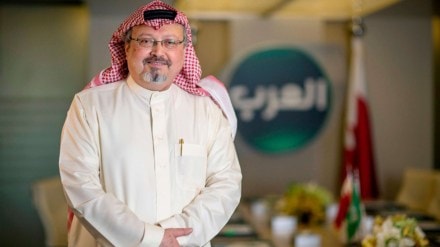US President Donald Trump on Tuesday brushed off a question about the 2018 killing of Jamal Khashoggi. He called Khashoggi “extremely controversial” and said that the issue was brought up during his meeting with Saudi Crown Prince Mohammed bin Salman only to embarrass the royal.
Trump, while addressing the reporter who asked the question, said that many didn’t like “that gentleman” and that “things happen”. Trump also insisted that Crown Prince Mohammed, who the CIA believes likely ordered the killing, was not involved.
“He knew nothing about it, and we can leave it at that,” Trump said, while looking at the Crown Prince.
Who was Jamal Khashoggi?
Khashoggi was a well-known US-based Saudi journalist who reported on major events for different Saudi media outlets, including the Soviet-Afghan war and the rise of Osama Bin Laden.
In 2018, on October 2nd, Khashoggi entered the Saudi consulate in Istanbul where he was killed inside. In the months after his death, there were many different stories about how he was murdered, what happened to his body, and who planned the crime.
Saudi authorities said he died during a “rogue operation” carried out by agents sent to convince him to return to the country, a BBC report said. Turkish officials, however, said those agents were following orders from the highest levels of the Saudi leadership, the report added.
What happened to Khashoggi?
For many years, the 59-year-old journalist had close ties with the Saudi royal family and even advised the government.
But over time he lost that standing and moved to the US in 2017, choosing to live in exile. From there, he wrote monthly pieces for the Washington Post, criticising the decisions of Crown Prince Mohammed bin Salman, the king’s son and the country’s de facto leader.
In his first column in September 2017, Khashoggi had said that he feared arrest during a wider clampdown on dissent linked to the crown prince. He went to the Saudi consulate in Istanbul on 28 September 2018 to get a document proving his divorce, which he needed in order to marry his Turkish fiancée, Hatice Cengiz. Officials told him to return on October 2 to collect it.
His fiancée later wrote in the Washington Post that he did not think anything bad would happen to him inside the consulate because it was on Turkish territory.
On October 2, Cengiz walked with him to the entrance. CCTV showed him entering the building at 13:14. Although he had assured friends he expected no trouble, he handed her two phones and told her to call an adviser to Turkish President Recep Tayyip Erdogan if he did not return.
She waited outside for more than 10 hours and came back again the next morning when he still had not appeared.
What did Saudi Arabia say then?
According to the report, Saudi officials repeatedly denied knowing what had happened to him for over 2 weeks. Prince Mohammed told a news outlet that Khashoggi had left the consulate shortly after arriving and insisted they were not hiding anything.
But on October 20, 2018, the Saudi government changed its stance, saying an early investigation showed Khashoggi died during a fight after resisting efforts to bring him back to Saudi Arabia. Later, a Saudi official said he died from a chokehold.
On November 15, Deputy Public Prosecutor Shalaan al-Shalaan said the killing was ordered by the head of a “negotiations team” sent by the deputy intelligence chief to convince Khashoggi to return peacefully if possible, or by force if not, the report said.
Investigators said that he was restrained after a struggle, injected with a large dose of a drug that caused an overdose, and died. His body was then cut up and given to a local helper for disposal, according to the prosecutor.
He also said five people had confessed to the killing and claimed that the Crown Prince had no knowledge of the operation.
What did the US Intelligence report say?
A US intelligence report of 2018 which was later declassified in 2021, concluded that the Saudi crown prince, who is widely known as MBS, had approved an operation in Istanbul to either detain or kill journalist Jamal Khashoggi.
The report said this judgment was based on several points, including the crown prince’s tight control over decisions in the kingdom, the direct involvement of one of his top advisers and members of his security team, and his past support for using force against critics living abroad, including Khashoggi.
It added that since 2017, Prince Mohammed had full authority over Saudi Arabia’s security and intelligence bodies, making it very unlikely that an operation of this scale could have happened without his approval.
According to the assessment, the 15-member team sent to Istanbul included officials connected to a unit led by Saud al-Qahtani, a close aide who had publicly stated in mid-2018 that he never acted without the crown prince’s permission.
The team also included seven members of the crown prince’s elite personal security group, a unit that reports only to him and had previously taken part in operations targeting critics both inside and outside the country.
Because of the prince’s firm control over the system, the report said it was improbable that his aides would challenge his instructions or carry out such a sensitive mission without his consent.
